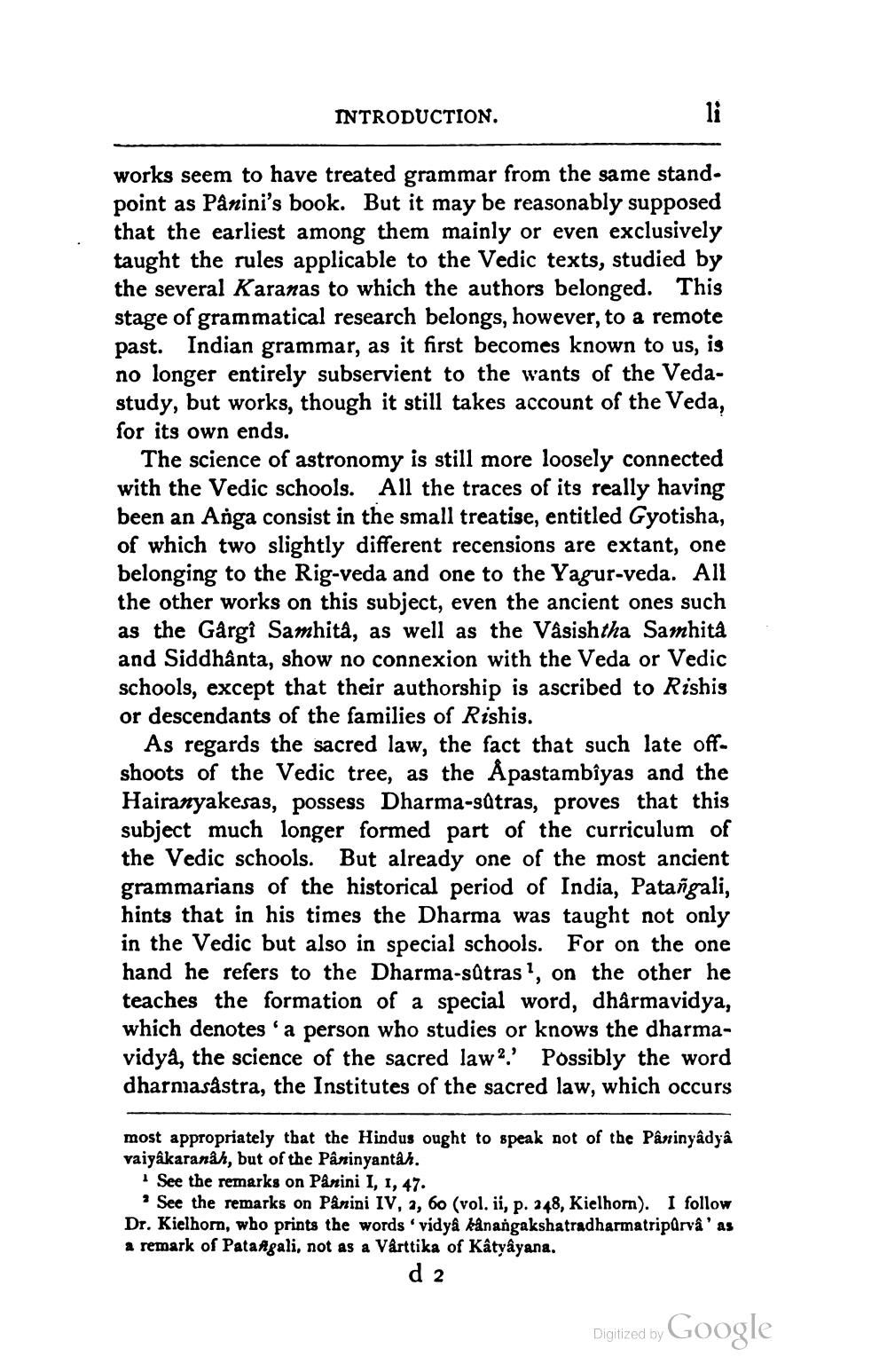________________
INTRODUCTION.
works seem to have treated grammar from the same stand. point as Panini's book. But it may be reasonably supposed that the earliest among them mainly or even exclusively taught the rules applicable to the Vedic texts, studied by the several Karanas to which the authors belonged. This stage of grammatical research belongs, however, to a remote past. Indian grammar, as it first becomes known to us, is no longer entirely subservient to the wants of the Vedastudy, but works, though it still takes account of the Veda, for its own ends.
The science of astronomy is still more loosely connected with the Vedic schools. All the traces of its really having been an Anga consist in the small treatise, entitled Gyotisha, of which two slightly different recensions are extant, one belonging to the Rig-veda and one to the Yagur-veda. All the other works on this subject, even the ancient ones such as the Gärgi Samhità, as well as the Vâsishtha Samhita and Siddhânta, show no connexion with the Veda or Vedic schools, except that their authorship is ascribed to Rishis or descendants of the families of Rishis.
As regards the sacred law, the fact that such late offshoots of the Vedic tree, as the Åpastambîyas and the Hairanyakesas, possess Dharma-sätras, proves that this subject much longer formed part of the curriculum of the Vedic schools. But already one of the most ancient grammarians of the historical period of India, Patañgali, hints that in his times the Dharma was taught not only in the Vedic but also in special schools. For on the one hand he refers to the Dharma-sútras', on the other he teaches the formation of a special word, dhårmavidya, which denotes a person who studies or knows the dharmavidya, the science of the sacred law?' Possibly the word dharmasastra, the Institutes of the sacred law, which occurs
most appropriately that the Hindus ought to speak not of the Pâninyâdyâ vaiyâkaranáh, but of the Pâninyantán.
See the remarks on Pånini I, 1, 47.
See the remarks on Pånini IV, a, 60 (vol. ii, p. 248, Kielhor). I follow Dr. Kielhorn, who prints the words 'vidya kanangakshatradharmatripärvâ' as a remark of Pata Agali, not as a Vârttika of Kâtyâyana.
d 2
Digitized by Google




